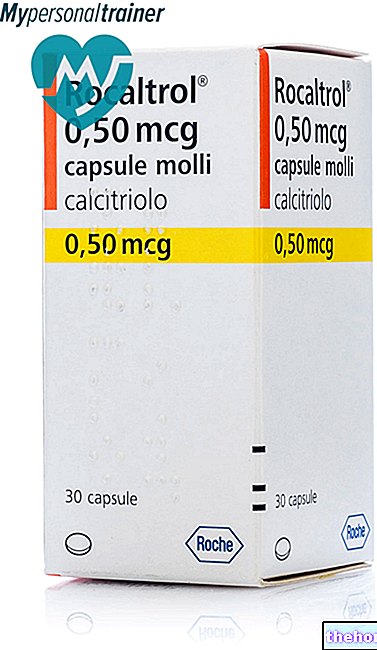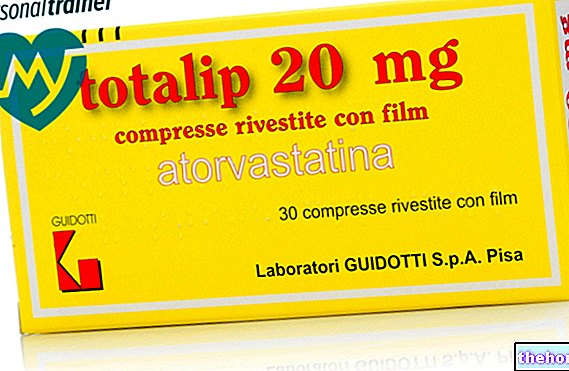Active ingredients: Eperisone hydrochloride
EXPOSE 50 mg film-coated tablets
EXPOSE 100 mg film-coated tablets
Indications Why is Expose used? What is it for?
Expose contains eperisone hydrochloride, an active ingredient belonging to the category of muscle relaxants, used for the treatment of muscle contractions, associated pain and involuntary muscle contractions (spasticity).
Exposesi use for:
- muscle contractures due to diseases of the bones, joints and muscles (cervical arthritis, shoulder joint arthritis, lumbosciatalgia, muscle pain in general)
- involuntary muscle contractions (spasticity) in a disease called plaque sclerosis
- spasticity in diseases of the spinal cord of an infectious, degenerative, traumatic or cancerous nature
- spasticity of cerebral origin
Talk to your doctor if you do not feel better or if you feel worse after the prescribed treatment period.
Contraindications When Expose should not be used
Do not take Expose
- if you are allergic to eperisone hydrochloride or any of the other ingredients of this medicine
- in pregnancy and breastfeeding
- if you have severe liver disease (severe liver failure)
Precautions for use What you need to know before taking Expose
Talk to your doctor or pharmacist before taking Expose.
Tell your doctor
- if you have or have suffered in the past from liver and / or kidney disease
- if you have abnormal liver and / or kidney function values (laboratory tests) because he will explain what to do and tell you which checks to perform
Children
Expose is not recommended for use in children
Interactions Which drugs or foods can modify the effect of Expose
Tell your doctor or pharmacist if you are taking, have recently taken or might take any other medicines.
Particular caution and vigilance by the physician is recommended in the case of simultaneous administration with the following drugs:
- salicylates (e.g. aspirin), as their blood levels are reduced
- calcium antagonists, since the effect exerted by them on the lowering of blood pressure may be accentuated.
Warnings It is important to know that:
Pregnancy and breastfeeding
If you are pregnant or breast-feeding, think you may be pregnant or are planning to have a baby, ask your doctor or pharmacist for advice before taking this medicine.
Expose should not be taken during pregnancy and breastfeeding. When Expose is to be taken, breastfeeding should be discontinued.
Driving and using machines
Exposé could reduce attention levels. Particular caution is recommended if you have to drive vehicles or use other machines
Dosage and method of use How to use Expose: Dosage
Always take this medicine exactly as your doctor or pharmacist has told you. If in doubt, consult your doctor or pharmacist.
The recommended dose is:
Adults
For the treatment of muscle contractures due to diseases of the bones, joints and muscles, the recommended dosage is 150-300 mg per day, depending on the severity of the symptoms:
- 1 tablet of 50 mg or 100 mg 3 times a day after meals.
For the treatment of spasticity the recommended dosage is 300 mg per day:
- 1 tablet of 100 mg 3 times a day after meals.
Senior citizens
In elderly patients with liver and / or kidney disease, the dosage should be reduced under close medical supervision.
It is recommended not to exceed the daily dosage of 150 mg.
Use in children
Expose is not recommended for use in children.
Overdose What to do if you have taken an overdose of Expose
If you accidentally take an overdose of the drug, ask your doctor for advice or go to the nearest hospital.
In the event of accidental overdose, although no such effects are described in the literature, a reduction in muscle tone (hypotonia) may occur, with possible involvement of the muscles that regulate breathing.
If you have any further questions on the use of this medicine, ask your doctor or pharmacist
Side Effects What are the side effects of Expose
Like all medicines, this medicine can cause side effects, although not everybody gets them.
Serious side effects
The following symptoms could be signs of severe skin reactions such as oculo-mucocutaneous syndrome (Steven-Johnson syndrome) or skin cell death (Lyell's syndrome). Stop taking Expose immediately and see your doctor if you notice any of these symptoms:
- redness
- itch
- allergic skin reactions (hives)
- swelling (edema) of the face or other parts
- difficulty breathing (dyspnoea)
- fever
- skin irritation (erythema)
- vesicles
- increased and / or difficulty in blood circulation in the eye (ocular congestion)
- inflammation of the lining of the mouth (stomatitis)
The undesirable effects associated with Expose were classified by frequency according to the following scheme:
Very common side effects (may affect more than 1 in 10 people):
- drowsiness, headache, confused mind
- stomach pain, diarrhea, nausea, vomiting, constipation, stomach discomfort, difficulty digesting
- sudden red spots or swelling on the skin (rash)
- decreased appetite (anorexia)
- feeling of weakness, tiredness
- insomnia
Common side effects (may affect up to 1 in 10 people):
- results of blood tests with increased levels of liver enzymes (AST, ALT and alkaline phosphatase)
- increased perception of heartbeat (palpitations)
- dizziness, loss of balance (vertigo), mood changes, tremor in the arms or legs, decreased sensation
- inflammation of the mucous membranes of the mouth, swelling of the stomach
- difficulty urinating, inability to hold urine
- itching, excessive sweating
- muscle stiffness, reduction of muscle tone
- hot flashes
- accumulation of fluid in the tissues (edema), thirst
Uncommon side effects (may affect up to 1 in 100 people):
- abnormal blood test results (increased urea nitrogen levels), deficiency of red blood cells (anemia)
- feeling that you have not emptied your bladder completely
- results of urine tests showing protein (proteinuria)
Very rare side effects (may affect up to 1 in 10,000 people):
- severe skin reactions (oculomucocutaneous syndrome, Steven-Johnson syndrome), death of skin cells (Lyell's syndrome)
- shock and severe allergic reactions (hypersensitivity)
Reporting of side effects
If you get any side effects, talk to your doctor or pharmacist. This includes any possible side effects not listed in this leaflet. You can also report side effects directly via the Yellow Card Scheme at www.mhra.gov.it/it/responsabili. By reporting side effects you can help provide more information on the safety of this medicine.
Expiry and Retention
Store below 30 ° C.
Keep this medicine out of the sight and reach of children.
Do not use this medicine after the expiry date which is stated on the package.
The expiry date refers to the last day of that month.
Do not use this medicine if the pack has been opened or damaged.
Do not throw any medicines via wastewater or household waste. Ask your pharmacist how to throw away medicines you no longer use. This will help protect the environment.
What Expose
EXPOSE 50 mg film-coated tablets:
- The active ingredient is eperisone hydrochloride 50 mg
- The other ingredients are: corn starch, microcrystalline cellulose, cross-linked sodium carboxymethylcellulose, hydroxypropylcellulose, calcium stearate.
- Film coating: hydroxypropylmethylcellulose, polyethylene glycol 6000, titanium dioxide, dimethicone, talc.
EXPOSE 100 mg film-coated tablets
- The active ingredient is 100 mg eperisone hydrochloride
- The other ingredients are: corn starch, microcrystalline cellulose, cross-linked sodium carboxymethylcellulose, hydroxypropylcellulose, calcium stearate.
- Film coating: hydroxypropylmethylcellulose, polyethylene glycol 6000, titanium dioxide, dimethicone, talc.
Expose appearance description and package contents
Carton: 30 film-coated tablets of 50 mg for oral use
Carton: 30 film-coated tablets of 100 mg for oral use
Source Package Leaflet: AIFA (Italian Medicines Agency). Content published in January 2016. The information present may not be up-to-date.
To have access to the most up-to-date version, it is advisable to access the AIFA (Italian Medicines Agency) website. Disclaimer and useful information.
01.0 NAME OF THE MEDICINAL PRODUCT
EXPOSE
02.0 QUALITATIVE AND QUANTITATIVE COMPOSITION
Each 50 mg film-coated tablet contains:
Nucleus
Active principle
Eperisone hydrochloride 50 mg
Each 100 mg film-coated tablet contains:
Nucleus
Active principle
Eperisone hydrochloride 100 mg
For the full list of excipients, see section 6.1.
03.0 PHARMACEUTICAL FORM
Film-coated tablets
04.0 CLINICAL INFORMATION
04.1 Therapeutic indications
Spasticity in multiple sclerosis and spasticity in spinal cord diseases of an infectious, degenerative, traumatic or neoplastic nature. Spasticity of cerebral origin.
Muscle contractures secondary to osteoarthromuscular pathologies (cervical arthrosis, scapulo-humeral periarthritis, lumbosciatalgia, myalgia in general).
04.2 Posology and method of administration
Adults :
For the treatment of spasticity the recommended dosage is 300 mg per day:
• 1 tablet of 100 mg 3 times a day after meals.
For the treatment of osteoarthromuscular diseases, the recommended dosage is 150-300 mg per day, depending on the severity of the symptoms:
• 1 50 mg or 100 mg tablet 3 times a day after meals.
Senior citizens
In elderly patients, in the presence of impaired hepatic and / or renal function, therapeutic measures such as dose reduction under close surveillance should be established.
It is recommended not to exceed the daily dosage of 150 mg.
Children
The use of Expose is not recommended in children due to the lack of clinical data to establish the modalities of use in the pediatric field.
04.3 Contraindications
Hypersensitivity to the active substance or to any of the excipients.
Pregnancy and breastfeeding. Severe hepatic insufficiency.
04.4 Special warnings and appropriate precautions for use
In hepatic and / or renal patients it is recommended to monitor hepatic and / or renal function.
Despite not having observed significant changes in haematological parameters and liver function in humans, it is nevertheless considered useful to carry out periodic checks during long-term therapies.
04.5 Interactions with other medicinal products and other forms of interaction
Particular caution and vigilance by the physician is recommended in the case of concomitant therapy with salicylates, since the blood levels of the latter are reduced by concomitant administration of eperisone. Similar caution is suggested in the case of concomitant therapy with calcium channel blockers, whose antihypertensive action may be enhanced.
04.6 Pregnancy and lactation
Even if the complex of studies carried out on animals does not highlight a specific teratogenic potential attributable to eperisone, the drug is contraindicated during pregnancy and lactation.
When Expose is to be taken, breastfeeding must be stopped.
04.7 Effects on ability to drive and use machines
Particular caution is recommended in patients who drive vehicles or other machinery as the drug may reduce alertness levels.
04.8 Undesirable effects
Since shock and anaphylactoid reactions can occur, patients should be followed closely. In the event of symptoms such as redness, itching, hives, edema of the face or other parts, and dyspnoea, treatment should be stopped and appropriate measures taken.
Serious skin diseases such as oculo-mucocutaneous syndrome (Steven-Johnson syndrome) or toxic epidermal necrolysis (Lyell's syndrome) can occur. In the case of symptoms such as fever, erythema, blisters, itching, ocular congestion or stomatitis, etc., the treatment should be stopped and appropriate measures taken.
The undesirable effects associated with Expose, reported in clinical trials and post-marketing surveillance of over 12,000 patients, have been classified by organ system and frequency according to the following scheme:
very common> 1/10
common> 1/100
uncommon> 1 / 1,000
rare> 1 / 10,000
very rare
Diagnostic tests
Common: Increased blood levels of AST, ALT and alkaline phosphatase
Uncommon: Increased blood levels of urea nitrogen
Cardiac pathologies
Common: Palpitations
Disorders of the blood and lymphatic system
Uncommon: Anemia
Nervous system disorders
Very common: Somnolence, Headache, Confused mind
Common: Dizziness, Vertigo, Mood altered, Tremor (in the limbs), Hypoesthesia
Gastrointestinal disorders
Very common: Abdominal pain, Diarrhea, Nausea, Vomiting, Constipation, Stomach discomfort, Dyspepsia
Common: Stomatitis, Abdominal swelling
Renal and urinary disorders
Common: Urinary incontinence, Urinary retention
Uncommon: Sensation of residual urine, Proteinuria
Skin and subcutaneous tissue disorders
Very common: Rash
Common: Pruritus, Hyperhidrosis
Very rare: Oculo-mucocutaneous syndrome (Steven-Johnson syndrome), toxic epidermal necrolysis (Lyell's syndrome),
Musculoskeletal and connective tissue disorders
Common: Muscle stiffness, Hypotonia
Metabolism and nutrition disorders
Very common: Anorexia
Vascular pathologies
Common: Hot flashes
General disorders and administration site conditions
Very common: Asthenia, Fatigue
Common: Edema, Thirst
Disorders of the immune system
Very rare: Shock and anaphylactoid reactions
Psychiatric disorders
Very common: Insomnia
The side effects associated with Expose are generally transient and do not require specific treatment.
04.9 Overdose
In the event of accidental overdose, although no such effects are described in the literature, muscle hypotonia may occur, which may also affect the respiratory muscles.
As no specific antidotes are known, it is advisable to implement the most appropriate countermeasures, such as gastric lavage and control of respiratory and cardiac function.
05.0 PHARMACOLOGICAL PROPERTIES
05.1 Pharmacodynamic properties
Eperisone hydrochloride is a multipurpose muscle relaxant that presents a completely new mechanism for the treatment of spasticity, muscle contracture and associated pain.
Its effect is expressed through a series of synergistic actions:
• inhibition of spontaneous discharge of spinal motor neurons, by directly intervening on the mechanisms responsible for regulating muscle tone;
• increased blood flow in areas with muscle hypertonus through an action on voltage-dependent calcium channels and on calmodulin at the level of smooth muscle cells;
• analgesic activity thanks to its action as an antagonist of Substance P at the spinal level.
05.2 Pharmacokinetic properties
Eperisone is rapidly absorbed from the gastrointestinal tract, reaching a Cmax after 1.6-2 hours, with a plasma half-life of 1.59 hours.
Eperisone is transformed in the liver into various inactive metabolites which are eliminated for 76.6% by the kidney and 23.4% by the faecal route.
In the "elderly, kinetics are slower with a plasma half-life of 2.57 hours."
In cirrhotic patients the plasma half-life is 6.6 hours; in patients with severe renal insufficiency (creatinine greater than 2 mg / 100 ml) the half-life was 6.56 hours.
These data should be taken into account when adjusting the dose during prolonged treatment in the elderly and in subjects with liver cirrhosis and renal insufficiency.
05.3 Preclinical safety data
Acute, subacute and chronic toxicity studies were conducted in rats, mice and dogs up to dosages higher than the pharmacodynamically active ones. The histopathological examinations performed did not reveal any noteworthy alterations. No teratogenic effect was shown for doses up to 10 times higher than the maximum dose used in humans. Mutagenicity tests were negative.
06.0 PHARMACEUTICAL INFORMATION
06.1 Excipients
Corn starch, microcrystalline cellulose, cross-linked sodium carboxymethylcellulose, hydroxy-propylcellulose, calcium stearate.
Film coating: Hydroxypropyl methylcellulose, Polyethylene glycol 6000, Titanium dioxide, Dimethicone, Talc.
06.2 Incompatibility
None known
06.3 Period of validity
2 years.
The expiry date indicated refers to the product in intact packaging, correctly stored.
06.4 Special precautions for storage
Expose 100 mg film-coated tablets:
Store at a temperature not exceeding 30 ° C.
06.5 Nature of the immediate packaging and contents of the package
Expose 100 mg film-coated tablets
PVC / PE / PVDC- Al blister
Box of 30 film-coated tablets of 100 mg
Expose 50 mg film-coated tablets
Blister made of amber Al / PVC / PVDC coupled material.
Box of 30 film-coated tablets of 50 mg
06.6 Instructions for use and handling
No special instructions.
07.0 MARKETING AUTHORIZATION HOLDER
EISAI s.r.l.
Via dell Unione Europea 6 / B - San Donato Milanese (MI)
Dealer for sale
Alfa Wassermann S.p.A
Via Enrico Fermi, 1 - 65020 Alanno (PE)
08.0 MARKETING AUTHORIZATION NUMBER
30 film-coated tablets 50 mg A.I.C. n. 028631012
30 film-coated tablets 100 mg A.I.C. n. 028631024
09.0 DATE OF FIRST AUTHORIZATION OR RENEWAL OF THE AUTHORIZATION
First authorization: April 12, 2000
Renewal of the authorization: 20 May 2005
10.0 DATE OF REVISION OF THE TEXT
April 2009




























